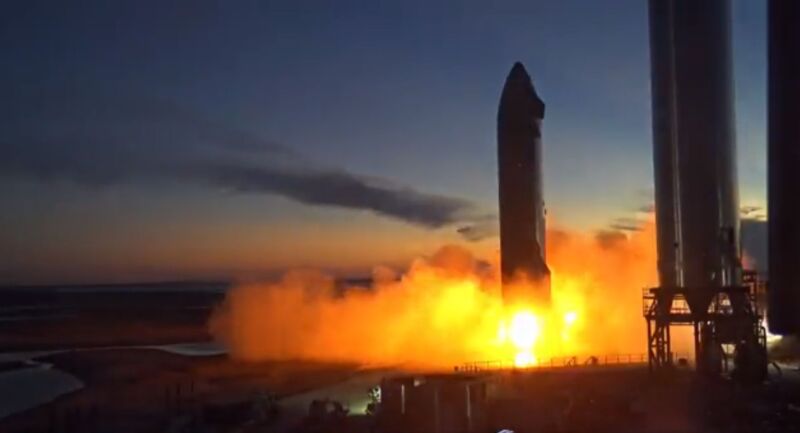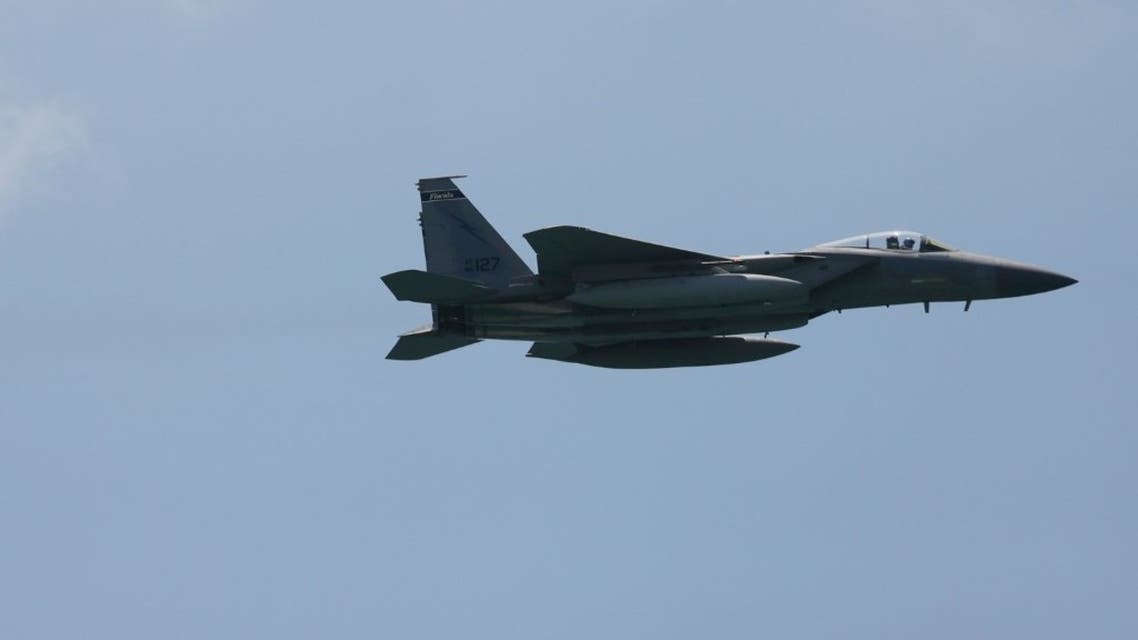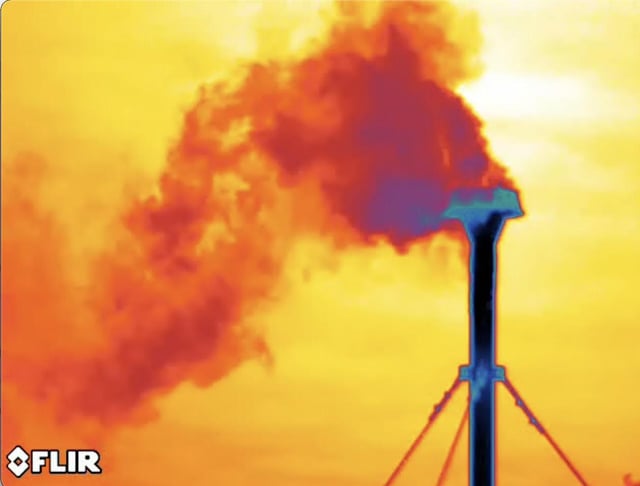How SpaceX ignited a new Raptor engine on Starship without an explosion
So why don't all rocket engines have giant nozzles?
ERIC BERGER - 10/22/2021, 9:28 AM

Enlarge / SpaceX ignites a vacuum-optimized Raptor engine attached to Starship on Thursday, October 21.
SpaceX took another step on Thursday evening toward validating the rocket engine technology that will power its Starship rocket. For the first time, engineers at the company ignited a vacuum version of a Raptor rocket engine that had been attached to the Starship upper stage.
The test-firing at sunset in South Texas lasted only a few seconds. But it appears to have been successful, and it checks another box in a series of technical tests SpaceX must complete before launching Starship on a Super Heavy rocket for an orbital test flight. This may happen sometime in early 2022.
First firing of a Raptor vacuum engine integrated onto a Starship pic.twitter.com/uCNAt8Kwzo
— SpaceX (@SpaceX) October 22, 2021
SpaceX has test-fired its Starship vehicle with Raptor engines before, of course. In some prototype test flights, the vehicle has ascended up to about 10 km under the power of up to three Raptor "sea level" engines. But it is quite another thing to test a rocket with a version of Raptor optimized to operate in the vacuum of space.
Expanding nozzles
Rocket engines have many parts, of course, but the largest and most prominent is the nozzle, which channels the flow of exhaust gas. This exhaust originates in the combustion chamber, where oxidizer and propellant combust. This exhaust gas is then pushed through a narrow opening—called a throat—to accelerate it. Now traveling supersonic, the exhaust expands as it enters the nozzle, where, the longer and wider the nozzle is, the faster the exhaust moves.
Faster gas coming out of a rocket engine is good because it delivers more thrust. More thrust means your rocket can lift more mass. An expanded nozzle, therefore, means better performance.
So why don't all rocket engines have giant nozzles? Because of a phenomenon known as "flow separation," which happens when the flow of gas inside an engine separates from the nozzle walls. This can induce turbulence and vibrations. In a worst-case scenario, it could result in the engine blowing itself up. There is no absolute value for when this occurs, but the risk of flow separation increases when the pressure of exhaust exiting the nozzle falls below 50 percent of the ambient pressure.
This isn't a problem in space, where the atmospheric pressure is essentially zero. But at sea level, the larger the nozzle, the greater the risk of flow separation.
The most common way to address this issue is to design a rocket's first stage with engines optimized for performance at sea level and an upper stage with vacuum-optimized engines. The Falcon 9 rocket, for example, has a first stage with nine Merlin engines with smaller nozzles that do all the work in the lower atmosphere and a Merlin-vacuum engine with a much larger nozzle for outer space.
Alternative approaches
NASA's space shuttle took a more hybrid approach. Its main engines, which fired throughout its flight profile from launch into orbit, sacrificed performance on both ends. The shuttle ended up with a nozzle as large as possible at sea level—it really pushed the limits on flow separation without going over the edge—but considerably smaller than would be optimal in a vacuum.
SpaceX's Starship upper stage is designed to fly in both thick atmospheres and space. It aims to solve the nozzle-size conundrum by flying with three "sea level" Raptor engines and three "vacuum" Raptor engines. Thursday's test marked the first time one of the vacuum engines was attached to a Starship vehicle and test fired.
The most experienced US upper-stage engine, the RL-10 manufactured by Aerojet Rocketdyne, has a massive expansion ratio, in that its nozzle size is much larger than its throat. So this engine can only be tested on the ground in a large vacuum chamber. SpaceX's test on Thursday took place outside, in South Texas, a few feet above sea level.
So how did SpaceX complete the test firing of the vacuum-optimized engine without destroying it?
In response to this question, SpaceX founder Elon Musk said on Twitter that the company solved the problem by building the Raptor engine to produce a very high chamber pressure. The engine is also not yet fully optimized for a vacuum, so there was enough margin to prevent flow separation from destabilizing it.
This allowed SpaceX to complete its test on Thursday without anything blowing up.















